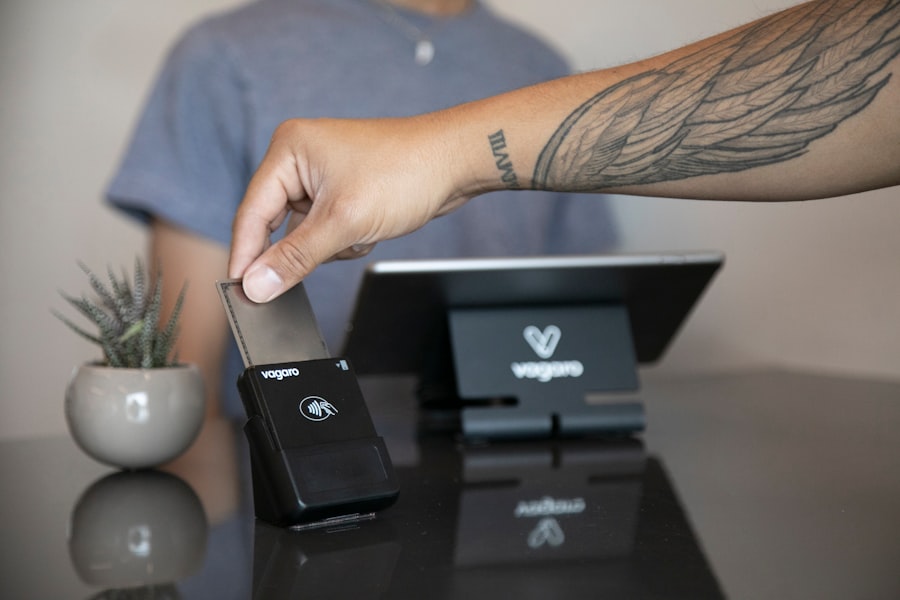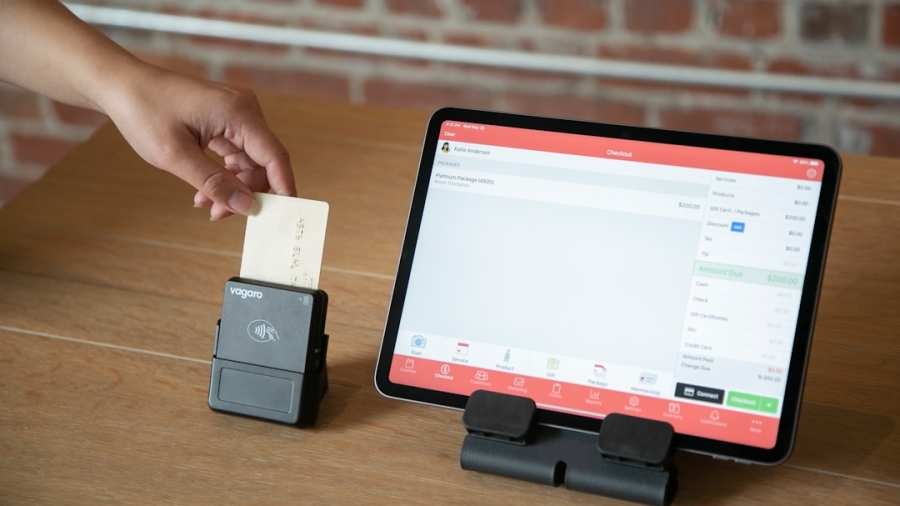In today’s digital landscape, the importance of using secure websites cannot be overstated. Secure websites are those that utilize HTTPS (Hypertext Transfer Protocol Secure) rather than the standard HTTP. The ‘S’ in HTTPS indicates that the website is encrypted, which means that any data exchanged between your browser and the website is protected from eavesdroppers.
This encryption is particularly crucial when entering sensitive information, such as credit card details or personal identification. When you see a padlock icon in the address bar of your browser, it signifies that the connection is secure, providing an additional layer of assurance that your data is being transmitted safely. As cyber threats continue to evolve, ensuring that you are interacting with secure websites is a fundamental step in safeguarding your online presence.
Moreover, the prevalence of data breaches and cyberattacks has made it imperative for users to be vigilant about the websites they visit. Many malicious actors create counterfeit websites that mimic legitimate ones to trick users into providing their personal information. By prioritizing secure websites, you significantly reduce the risk of falling victim to such scams.
It is advisable to develop a habit of checking for HTTPS and the padlock icon before entering any sensitive information. Additionally, using browser extensions that alert you to insecure sites can further enhance your online safety. In a world where online transactions and interactions are commonplace, being proactive about using secure websites is a critical component of maintaining your digital security.
Key Takeaways
- Use secure websites for online transactions to protect your financial information
- Protect your personal information by being cautious about what you share online
- Beware of phishing scams and do not click on suspicious links or provide personal information
- Use strong passwords with a combination of letters, numbers, and special characters
- Keep your software updated to protect against security vulnerabilities and malware
- Use a secure payment method such as credit cards or payment services with buyer protection
- Check for secure connections when entering personal or financial information online
- Be cautious of public Wi-Fi and avoid accessing sensitive information on unsecured networks
Protect Your Personal Information
Understanding the Importance of Personal Information Protection
In today’s digital age, protecting your personal information is crucial. This information can range from basic details like your name and address to more sensitive data such as Social Security numbers and financial information. Limiting the amount of personal information you share online is one of the most effective ways to safeguard your data.
Safe Social Media Practices
Social media platforms often encourage users to share personal details, but this can lead to identity theft and other forms of cybercrime. To avoid this, review your privacy settings on these platforms and restrict access to your information to only trusted friends and family members. Be cautious when signing up for services or making purchases, and only provide the necessary information.
Company Data Handling and Minimizing Your Digital Footprint
It’s essential to be aware of how companies store and use your personal information. Many organizations collect data for marketing purposes or to enhance user experience, but this data can be vulnerable to breaches. Before providing your information, research the company’s privacy policy to understand how they handle your data. Opting out of data collection where possible can also help minimize your digital footprint. Consider using pseudonyms or alternative email addresses when signing up for newsletters or online accounts that do not require your real identity.
Beware of Phishing Scams

Phishing scams have become increasingly sophisticated, making it essential for internet users to remain vigilant against these deceptive tactics. Phishing typically involves fraudulent emails or messages that appear to come from legitimate sources, such as banks or well-known companies, with the intent of tricking individuals into revealing sensitive information like passwords or credit card numbers. These scams often create a sense of urgency, prompting recipients to act quickly without thoroughly evaluating the situation.
For instance, a phishing email may claim that your account has been compromised and instruct you to click on a link to verify your identity. This link often leads to a counterfeit website designed to capture your credentials. To effectively combat phishing scams, it is crucial to develop a habit of scrutinizing any unsolicited communication you receive.
Look for signs of phishing, such as poor grammar, generic greetings, or suspicious links. Hovering over links before clicking can reveal their true destination, allowing you to avoid potentially harmful sites. Additionally, if you receive a message that seems suspicious but appears to be from a trusted source, consider contacting the organization directly through official channels rather than responding to the email or clicking on any links.
By remaining cautious and informed about phishing tactics, you can protect yourself from falling victim to these increasingly prevalent scams.
Use Strong Passwords
The significance of using strong passwords cannot be emphasized enough in today’s digital age, where cyber threats are rampant. A strong password acts as the first line of defense against unauthorized access to your accounts and personal information. Ideally, a strong password should be at least 12 characters long and include a mix of uppercase letters, lowercase letters, numbers, and special symbols.
Avoid using easily guessable information such as birthdays, names, or common words. Instead, consider using passphrases—longer sequences of words or phrases that are easier for you to remember but difficult for others to guess. For example, a phrase like “BlueSky!Dances@Night” combines complexity with memorability.
In addition to creating strong passwords, it is equally important to manage them effectively. Many people struggle with remembering multiple complex passwords for different accounts, which can lead them to reuse passwords across various platforms—a practice that significantly increases vulnerability. To mitigate this risk, consider using a password manager that securely stores and generates unique passwords for each of your accounts.
This way, you only need to remember one master password while ensuring that each account has its own strong password. Regularly updating your passwords and enabling two-factor authentication wherever possible adds an extra layer of security, making it much harder for cybercriminals to gain access to your accounts.
Keep Your Software Updated
Keeping your software updated is a crucial yet often overlooked aspect of maintaining cybersecurity. Software developers frequently release updates that not only introduce new features but also patch vulnerabilities that could be exploited by malicious actors. Failing to install these updates can leave your devices susceptible to attacks that take advantage of known weaknesses in outdated software.
This applies not only to operating systems but also to applications and antivirus programs. Regularly checking for updates and enabling automatic updates where possible ensures that you are always protected against the latest threats. Moreover, outdated software can also hinder performance and functionality, leading to a frustrating user experience.
Cybercriminals are constantly evolving their tactics; therefore, staying ahead by keeping your software current is essential for both security and efficiency. In addition to operating systems and applications, don’t forget about browser plugins and extensions—these can also pose security risks if not updated regularly. By adopting a proactive approach toward software updates, you not only enhance your cybersecurity posture but also ensure that your devices operate smoothly and efficiently.
Use a Secure Payment Method

Protecting Your Financial Information Online
When it comes to online transactions, using a secure payment method is vital for protecting your financial information. Traditional credit and debit cards can be vulnerable if they fall into the wrong hands; however, many secure payment options have emerged in recent years that offer enhanced protection against fraud.
Secure Payment Options and Their Benefits
Services like PayPal or digital wallets such as Apple Pay and Google Pay allow users to make transactions without directly sharing their credit card details with merchants. These services often employ encryption and tokenization techniques that add an extra layer of security during transactions. Additionally, consider using virtual credit cards for online purchases when available. Virtual cards generate temporary card numbers linked to your actual account but can only be used for specific transactions or within a limited timeframe.
Ensuring Secure Transactions and Reducing Financial Risk
This means that even if a merchant’s site is compromised, your actual card details remain safe from exposure. Always look for indicators of secure payment methods on e-commerce sites—such as SSL certificates and trust badges—to ensure that your financial data is being handled securely. By choosing secure payment methods and remaining vigilant during online transactions, you can significantly reduce the risk of financial fraud.
Check for Secure Connections
In an era where online privacy is increasingly under threat, checking for secure connections has become an essential practice for internet users. A secure connection typically refers to an encrypted link between your device and the website you are visiting, which protects any data exchanged during that session from being intercepted by malicious actors. The most common indicator of a secure connection is the presence of HTTPS in the URL along with a padlock icon in the address bar of your web browser.
These indicators signify that the website employs SSL (Secure Socket Layer) technology to encrypt data transmitted between users and servers. However, simply relying on these visual cues is not enough; it’s also important to be aware of other factors that contribute to a secure connection. For instance, avoid entering sensitive information on public or unsecured networks where data can easily be intercepted by hackers.
Using a Virtual Private Network (VPN) can help encrypt your internet traffic even on unsecured networks by creating a private tunnel for your data transmission. Additionally, regularly reviewing the security settings in your browser can help ensure that you are taking full advantage of available protections against insecure connections. By being diligent about checking for secure connections, you can significantly enhance your online safety.
Be Cautious of Public Wi-Fi
Public Wi-Fi networks offer convenience but come with significant risks that users must navigate carefully. While these networks allow easy access to the internet in cafes, airports, and other public spaces, they are often unsecured and can expose users’ devices and data to cybercriminals looking to exploit vulnerabilities. When connected to public Wi-Fi, it becomes easier for hackers to intercept data transmitted over the network—this includes sensitive information such as login credentials and financial details.
Therefore, it’s crucial to exercise caution when accessing public Wi-Fi networks and avoid conducting sensitive transactions while connected. To mitigate risks associated with public Wi-Fi usage, consider employing several best practices. First and foremost, use a VPN whenever you connect to public networks; this encrypts your internet traffic and makes it significantly more difficult for hackers to access your data.
Additionally, disable file sharing and ensure that your device’s firewall is activated before connecting to public Wi-Fi. If possible, limit your activities on public networks to browsing or accessing non-sensitive information until you can connect securely at home or another trusted location. By being cautious and implementing protective measures when using public Wi-Fi networks, you can enjoy the convenience they offer while minimizing potential security threats.
When considering safe online shopping practices, it’s also essential to have the right tools at your disposal to enhance your productivity and security. One such tool is the use of specialized templates that can help you organize your shopping lists, track your orders, and budget your expenses effectively. For students or anyone looking to streamline their online shopping process, using templates from Notion can be incredibly beneficial. You can find a comprehensive guide to the best Notion templates of 2023, which could be a great addition to your online shopping toolkit. Check out the article here: The Ultimate Collection of 2023’s Best Notion Templates for Students.
FAQs
What are some tips for safe online shopping?
Some tips for safe online shopping include using secure and reputable websites, being cautious of deals that seem too good to be true, using strong and unique passwords, and being wary of phishing emails and scams.
How can I ensure that a website is secure for online shopping?
You can ensure that a website is secure for online shopping by looking for “https” in the URL, a padlock symbol in the address bar, and checking for a trust seal from a reputable security company.
What should I do if I suspect a website or seller is fraudulent?
If you suspect a website or seller is fraudulent, you should avoid making any purchases, report the website or seller to the appropriate authorities, and consider contacting your bank or credit card company to report the potential fraud.
What are some red flags to watch out for when shopping online?
Some red flags to watch out for when shopping online include websites with poor design and spelling errors, sellers asking for unusual payment methods, and deals that seem too good to be true.
How can I protect my personal and financial information when shopping online?
You can protect your personal and financial information when shopping online by using secure and unique passwords, avoiding public Wi-Fi for online shopping, and regularly monitoring your bank and credit card statements for any unauthorized charges.

